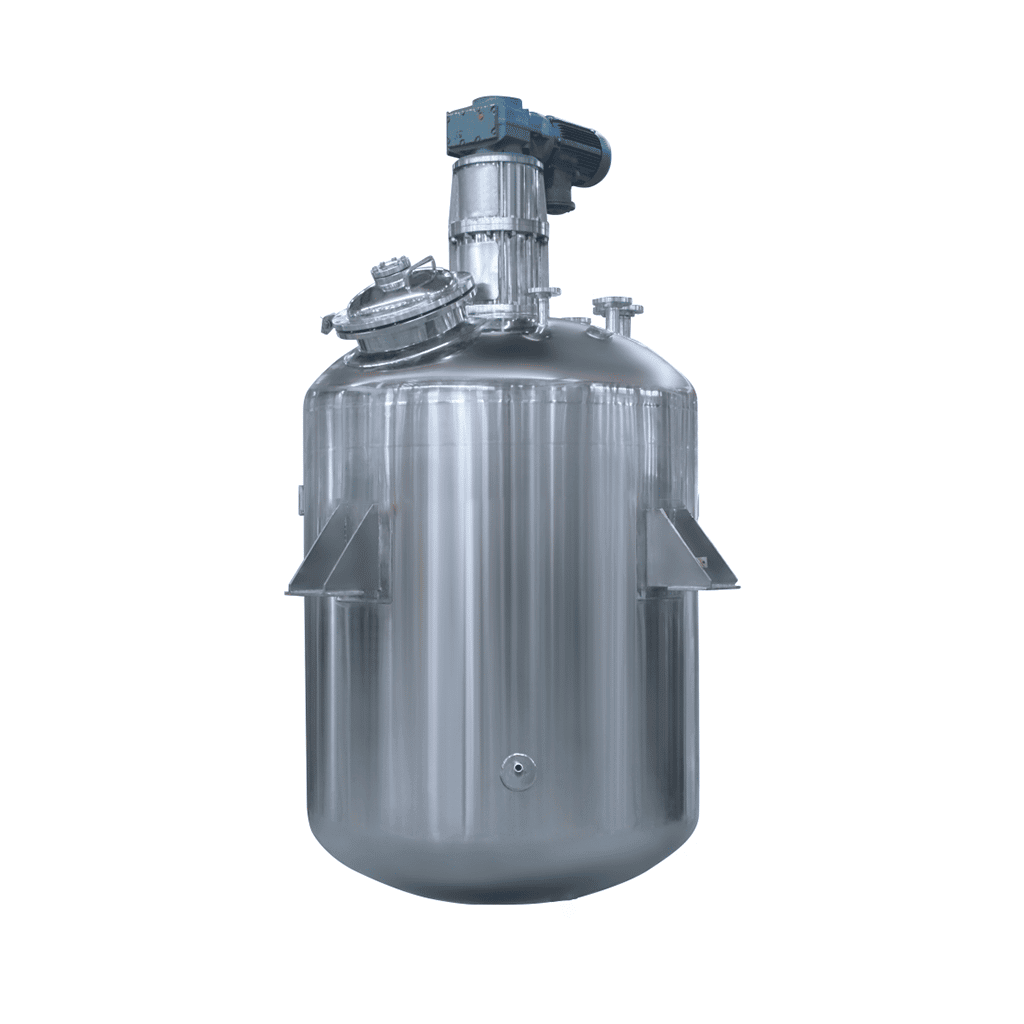
-24-1.jpg)
Stainless Steel Reactor
Stainless Steel Reactor: used in dairy products, sugar, beverages, and other fields
Material
stainless steel (316, 304)
Capacity (L)
10-10000+
Mixing system
anchor, paddle, frame and others
Heating system
electric heating, oil heating and others
A stainless steel reactor is a stainless steel container equipment. The stainless steel reactor consists of a kettle body, a kettle lid, a stirrer, a jacket, a bracket, a transmission device, a shaft seal device, etc. Materials and openings can be made according to user needs and process requirements. Stainless steel reactors are mainly used for stirring, homogenizing, and mixing storage of dairy products, sugar, beverages, food, and various pharmaceuticals.
Request a quoteAn electrically heated stainless steel reactor is an important branch of the stainless steel reactor series. The production process is mainly made of 1Cr18N119Ti stainless steel plate. The stirring forms of electrically heated stainless steel reactors usually include anchor type, paddle type, worm gear type, and push type or frame type. It is a device with low investment and simple operation. An electrically heated stainless steel reactor has the advantages of fast heating, high-temperature resistance, and corrosion resistance. The entire device is easy to use and can be used elsewhere.
-24-1024x1024.jpg)
Installation method of electric heating stainless steel reactor
The electrically heated stainless steel reactor should be installed in a high pressure operating room that meets explosion proof requirements. When equipped with multiple electrically heated stainless steel reactors, they need to be placed separately. Every two electrically heated stainless steel reactors should be separated by a safe explosion proof wall, and each operating room should have passages and exits leading to the outdoors. When explosive media are present, the electrically heated stainless steel reactor should be kept well ventilated. After the electrically heated stainless steel reactor is installed and restored, a certain amount of nitrogen will be injected to maintain explosiveness. After pressurizing for 30 minutes, check whether the electric heating stainless steel reactor is leaking. If you find a leak, use soap suds to look for the leak in the pipes and nozzles. After finding it, release the gas tighten the air inlet, and then put the nitrogen into the pressure holding test again to ensure that there is no leakage and it can work normally.
The main body and lid of the electric heating stainless steel reactor adopt a gasket or line contact between the conical surface and the arc surface. The electric heating stainless steel reactor needs to tighten the nut diagonally and symmetrically several times, and then tighten it gradually. Ensure that the force is uniform and does not allow covering, tilting to one side to achieve a good sealing effect. When tightening the main nut of the electric heating stainless steel reactor, the specified tightening torque is within the range of 40120N.M to avoid crushing or overloading the sealing surface.
Electrically heated stainless steel reaction kettles can be divided into two categories. The upper head and the kettle body are linked together by flanges. The open type can be disassembled for repair at any time, while the closed type can’t be disassembled since the upper head and the kettle body are welded together. The electric heating stainless steel reactor is designed as an open type, the main purpose is to facilitate maintenance. When the stirrer in the kettle fails, the electric heating stainless steel reactor kettle can be disassembled at any time. Use lifting equipment to lift the motor, agitator, and upper head together for maintenance. After the maintenance is completed, assemble them according to their original appearance.
The open electric heating stainless steel reactor is mainly suitable for situations where the electric heating stainless steel reactor or stirrer with a small volume cannot be assembled and can only be welded together. Because the cost of open type electric heating stainless steel reactors is relatively high, closed type reactors are generally designed in the absence of instructions.
The difference between the two is that the closed type has the upper head and the kettle body welded together. The sealing effect is better than the open type, but it is more troublesome to maintain. The agitator of the closed electric heating stainless steel reactor is modular, so someone often needs to drill in through the manhole at the upper head to maintain it.
Electric heating stainless steel reactor heating method
Considering that some stainless steel reactor temperature control processes require a cooling function, the heating oil heater can be used in the heating method of the stainless steel reactor to form an electrically heated stainless steel reactor. The heat transfer oil is heated through the electric heating tube, and the electric heating stainless steel reactor is indirectly heated to the reaction jacket or coil through the circulating oil pump.
Electrically heated stainless steel reactors can use electric heating rods to heat the heat transfer oil in the jacket to raise the temperature of the heat transfer oil to the required level. Then there is a temperature measuring electric heating rod in the kettle to cut off and maintain a constant temperature. At the same time, its heat transfer oil electric heater can be equipped with a cooler. When the electric heating stainless steel reactor needs to be cooled, the heat transfer oil of the heat transfer oil electric heater is cooled by the cooling water, and then the electric heating stainless steel reactor is cooled by the heat transfer oil. Compared with direct electric heating, the temperature control of heat transfer oil electric heaters is relatively stable and safe.
It is strictly forbidden to disassemble the electric heated stainless steel reactor under pressure during or at the end of the work, and it is strictly forbidden to work under overpressure and overtemperature conditions. During the cleaning process of the electric heating stainless steel reactor, more attention should be paid not to flow water or other liquids into the heating furnace to prevent the heating wire from burning out.




